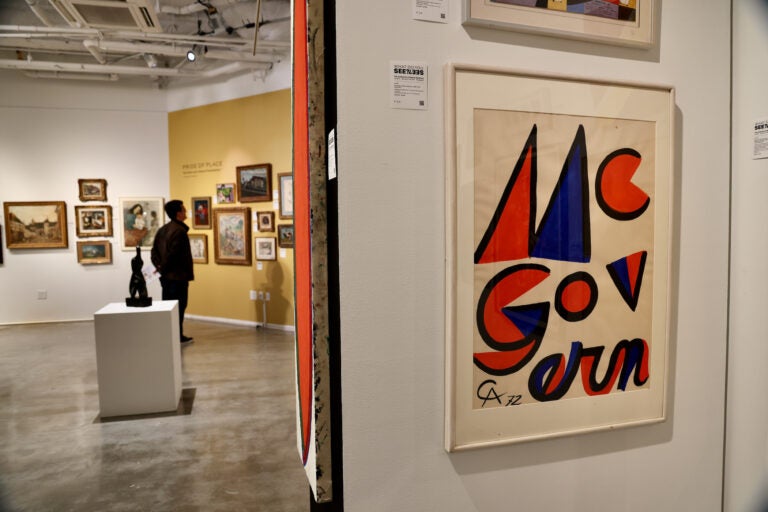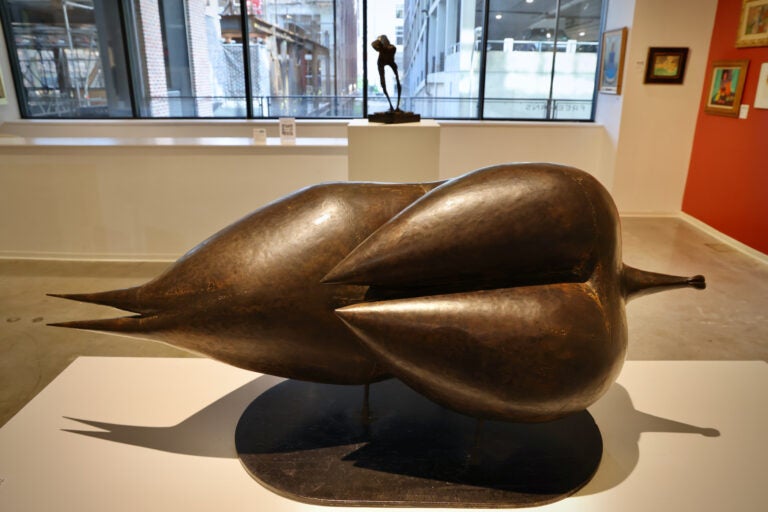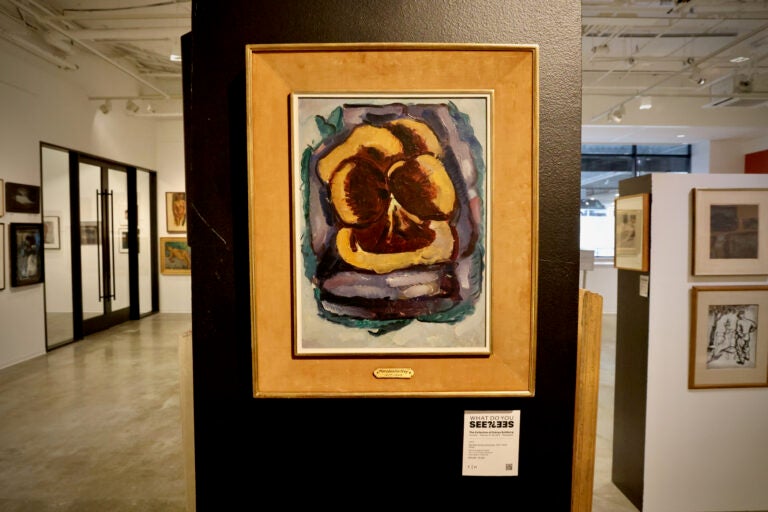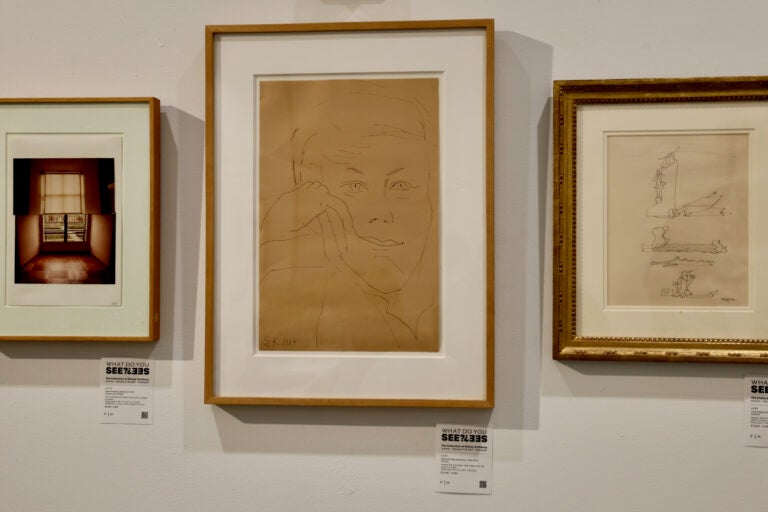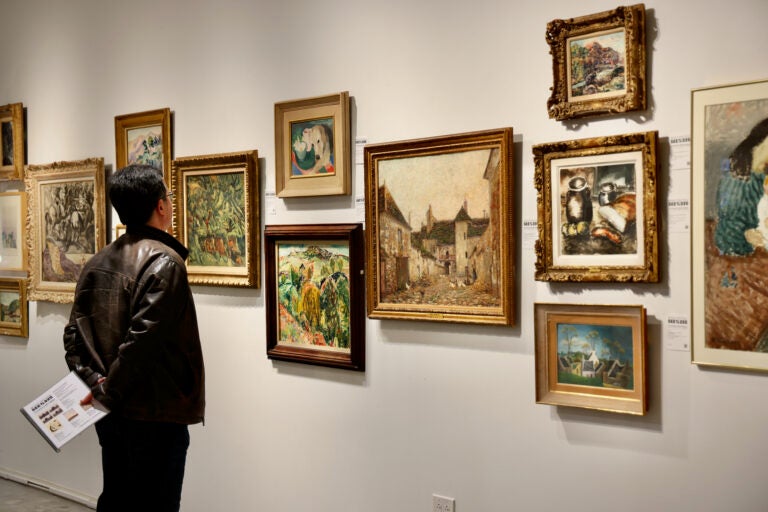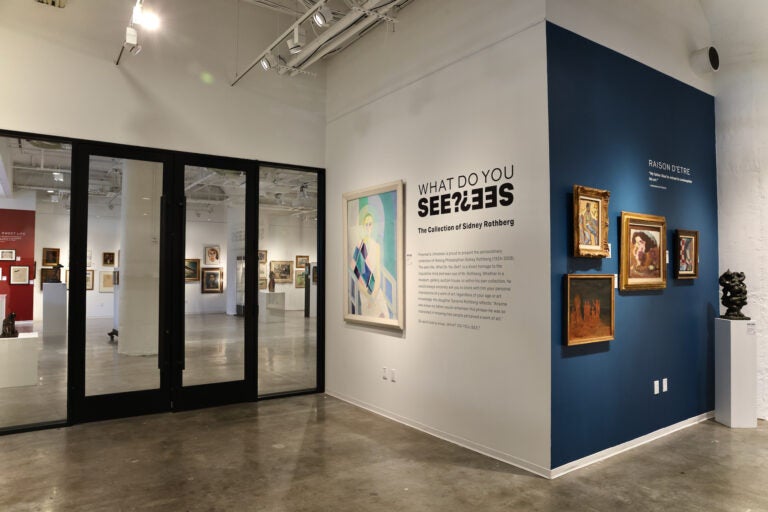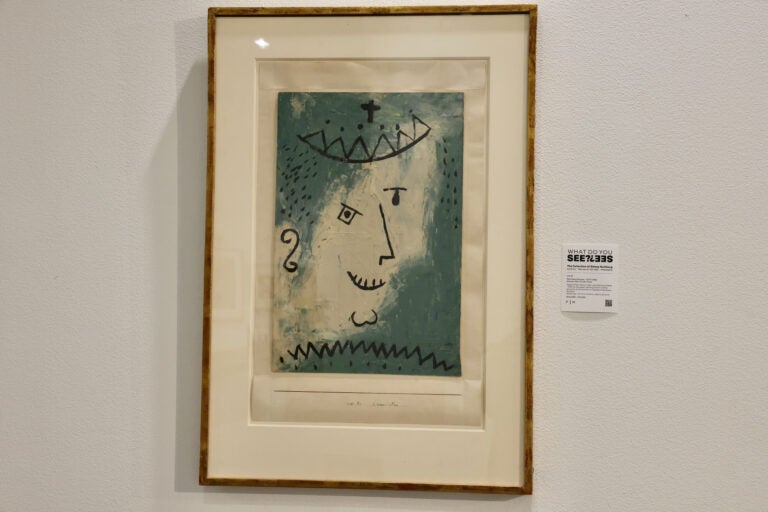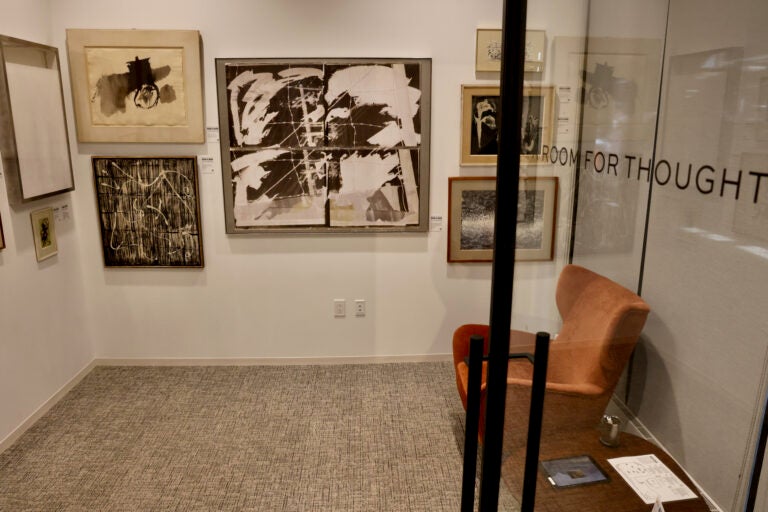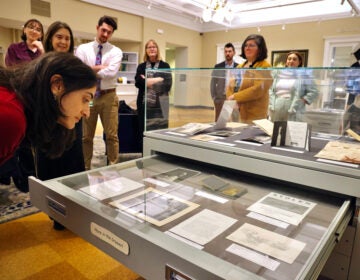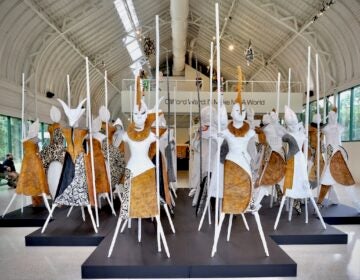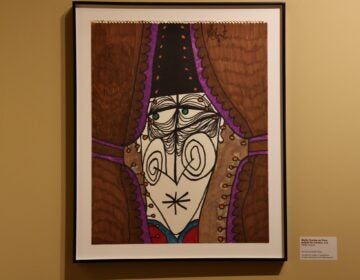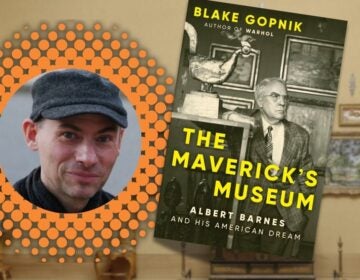A protégé of Albert Barnes amassed his own art collection worth millions. Now it’s for sale
Sidney Rothberg's multi-million dollar collection is briefly on view for free before it goes to auction.
Listen 1:18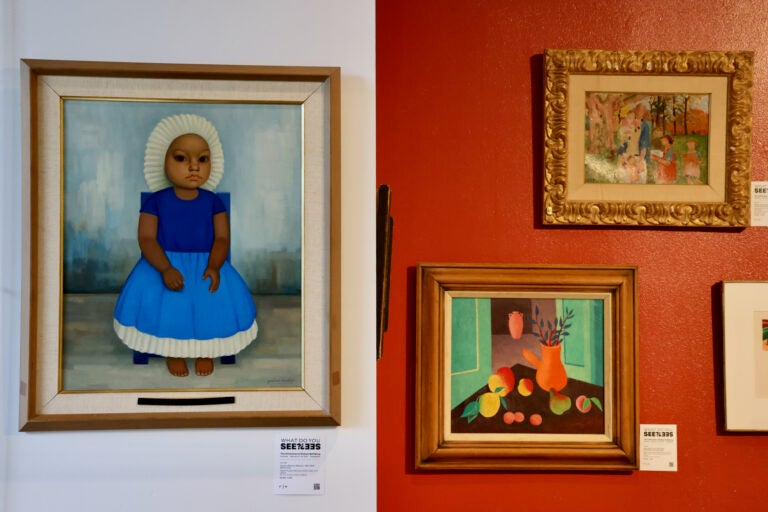
An art collection amassed by Sidney Rothberg, who died in 2008, is being auctioned at the Freeman's Hindman auction house, bringing some works into public view for the first time in more than 40 years. (Emma Lee/WHYY)
From Philly and the Pa. suburbs to South Jersey and Delaware, what would you like WHYY News to cover? Let us know!
At the threshold of Freeman’s/Hindman’s auction house at 2400 Market Street is a decal of two inverted question marks, implying a query to visitors as they both enter and exit: What do you see?
It was a question Sidney Rothberg pressed upon anyone looking at his prized art collection that filled his penthouse on the Parkway in Philadelphia.
“He said that when anyone looked at a painting, they saw things that he never ever saw,” said Rothberg’s daughter, Saranne, who grew up surrounded by her father’s collection. “If he just allowed the person the freedom to really talk about what they connected to in a painting, then he could even learn more.”
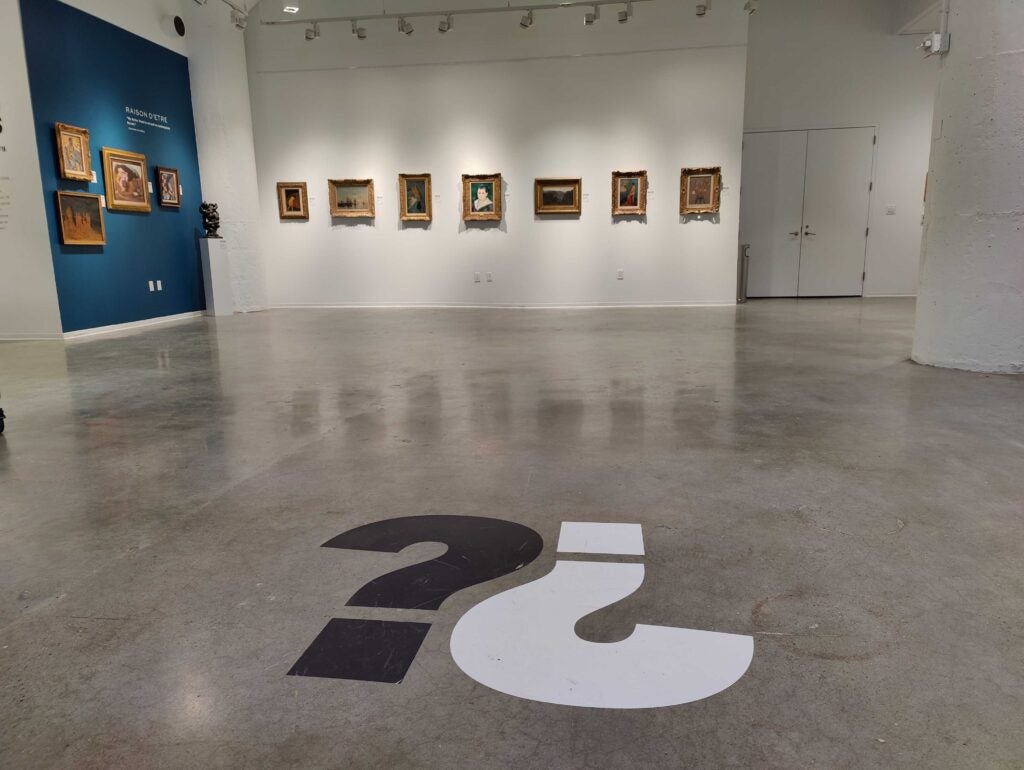
Rothberg died in 2008 at age 83. His successful career in the financial sector funded his lifelong fascination with art. During two sessions next Tuesday and Wednesday, Freeman’s will auction 242 pieces, which is expected to generate at least $3 million.
Rothberg’s sensibility as a collector was informed by Albert Barnes, who had strong ideas about the educational potential of looking at art. He learned about art at the Barnes Foundation and subsequently challenged visitors to pay attention to their own reactions when they looked at the walls of his home covered floor-to-ceiling with art.
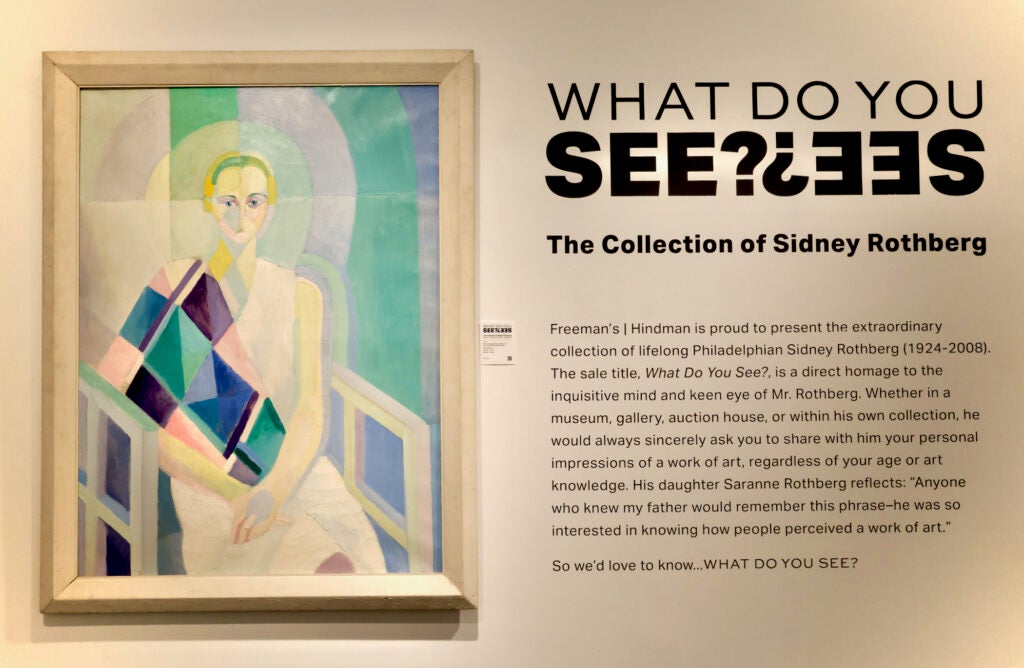
But Rothberg was a very private person. Only a few people were invited inside, even scholars, curators, and dealers who knew about his vast collection. He rarely loaned works out. Many pieces going to auction have not been seen in 50 years or more.
That’s why this Freeman’s exhibition is not just for auction hopefuls: Saranne and Freeman’s head of American art, Raphael Chatroux, designed the pre-auction exhibition to allow the general public to see these pieces before they disappear back into private hands.
“The collection has been here for decades, but it has not been seen or shown for all that time,” Chatroux said. “It was important for everyone who may have known that it existed to see it in the flesh before all those works are dispersed again throughout the globe.”
“We really wanted to put up something special so that all Philadelphians could see it,” he said.
Chatroux calls Rothberg a “Renaissance man” for his broad taste in art, including pieces by impressionist masters like Renoir and Matisse, mid-century American abstract artists like Frank Stella and Richard Diebenkorn and more contemporary British artists like David Hockney and Lucian Freud.
There are many well-known names in the auction — Paul Klee, Henri de Toulouse-Lautrec, Joan Miró, Chaïm Soutine, Arshile Gorky — but you won’t find a multi-million-dollar masterpiece.
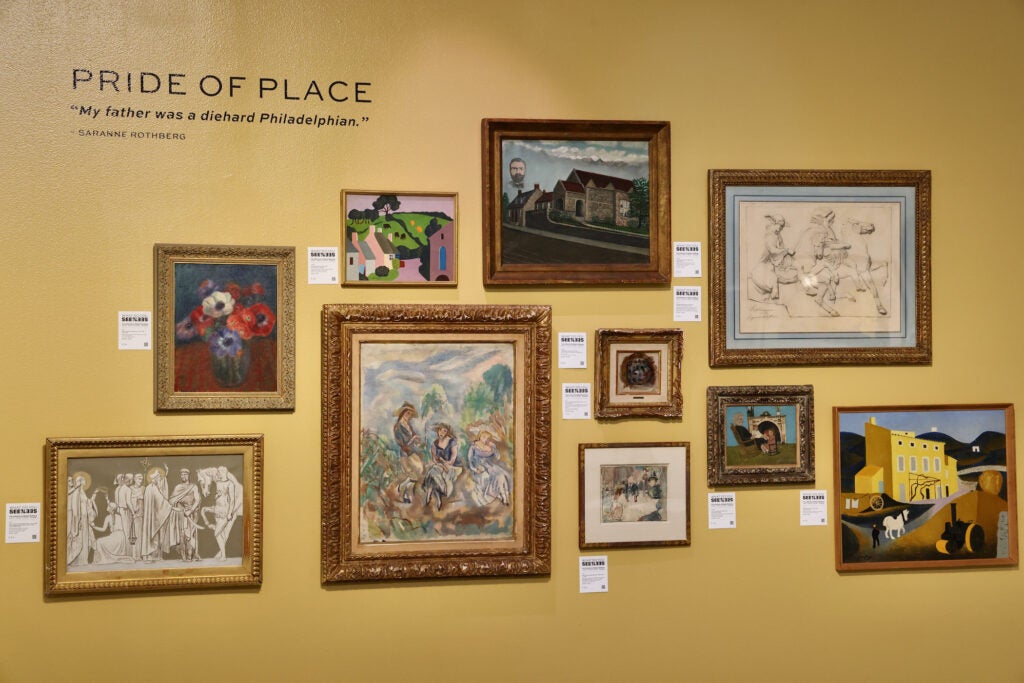
Instead, Rothberg preferred more obscure works that represent transitional phases in an artist’s career, like an Édouard Vuillard painted during a brief period when the artist was flirting with mystical themes, and a late-period Pierre-Auguste Renoir when the artist’s fingers were so arthritic he could not hold a paintbrush, instead tying the brushes to his palsied hands and using them like blunt instruments.
There is a painting by the Philadelphia native John Sloan, but instead of the gritty social realism the artist was known for as a prominent figure of the Ashcan school, Rothberg had instead acquired “Nude, Blue Swirl Couch and Ashtray” (1928), a woman in repose luxuriating with a cigarette.
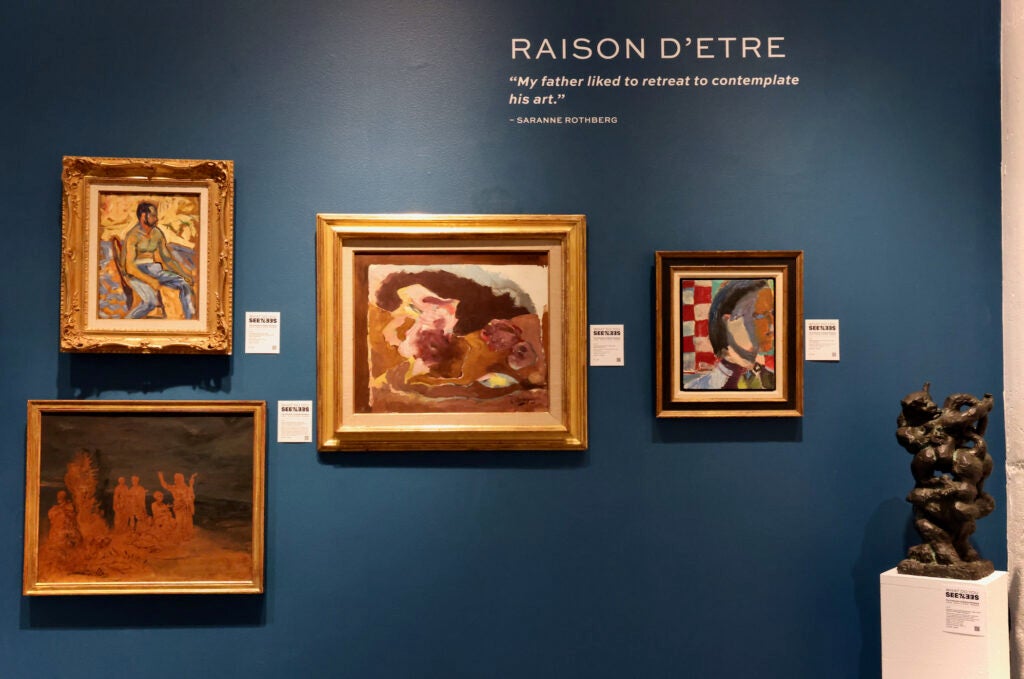
There are also pieces by artists who have contributed to Philadelphia’s public art landscape, such as Claes Oldenburg, Jean Dubuffet, Alexander Calder, Jacques Lipchitz, and Ellsworth Kelly.
According to his daughter, Rothberg grew up in Philadelphia, knowing little about art, until he was deployed to France as a soldier during World War Two and was approached on the street to buy a painting in exchange for “cigarettes or pantyhose.”
“My dad didn’t walk around with cigarettes or pantyhose,” Saranne said. “But he did realize that this piece was obviously looted from a museum, or from a home.”
He did not take that offer but was indelibly struck by the painting. When he returned home from the war, he dove into libraries to learn all he could about art. Eventually, he found the Barnes Foundation and its director of education, Violette de Mazia, under whom he studied.
“[De Mazia] was known for teaching art in a very specific way,” Chatroux said. “She was the one who always insisted on rotating some of the art to see new connections, new dialogues. The way she looked at the Barnes collection really inspired Sidney Rothberg to do so with his own collection.”
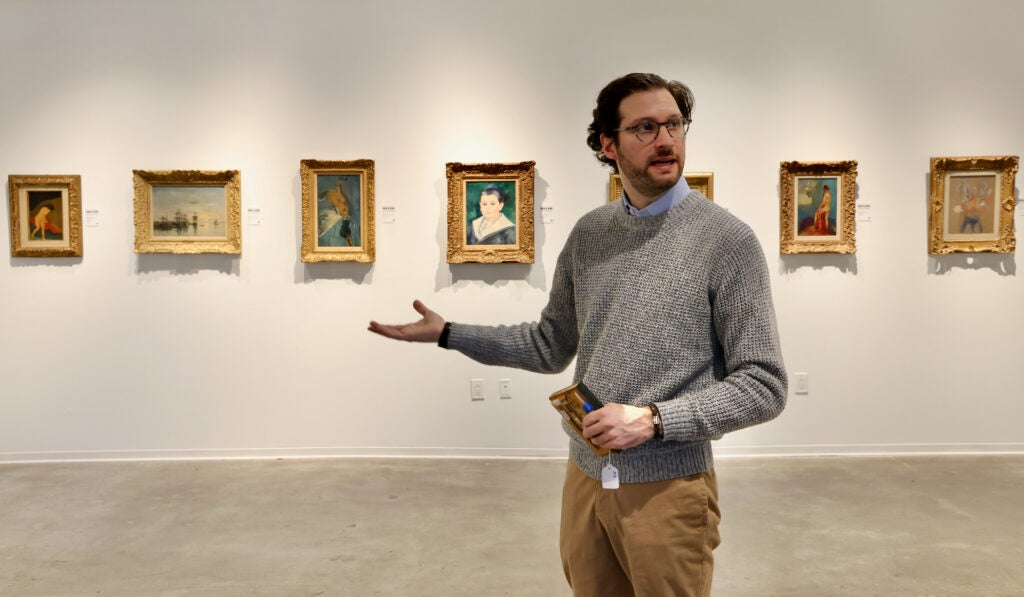
Chatroux paid homage to the Barnes Foundation by selecting work by artists whom Barnes also collected and arranging them salon-style on a dark yellow wall, mimicking the distinctive color of Barnes’ galleries.
Like Barnes, Rothberg was interested in seeing art in an eclectic context. Individual pieces take on new meanings depending on their grouping and proximity to other pieces.
Saranne said visitors were sometimes confused by her father’s arrangement.
“They would say, ‘Why is African art hung next to that Cubist piece,’ or ‘Why is jewelry hung next to that Pennsylvania Dutch thing?’” she said. “My dad was showing the influence and relationships that created the movements that created that artist. Art isn’t made in a vacuum.”
To encourage his daughter to engage with the collection at a very early age, Saranne said her father would hang pieces at “toddler height,” so the art was literally at her level. The auction exhibition features a “kids wall” with more child-like pieces, including Saranne’s childhood favorite, Jean Hugo. But in an abundance of caution Freeman’s hung them slightly higher than children’s fingers.
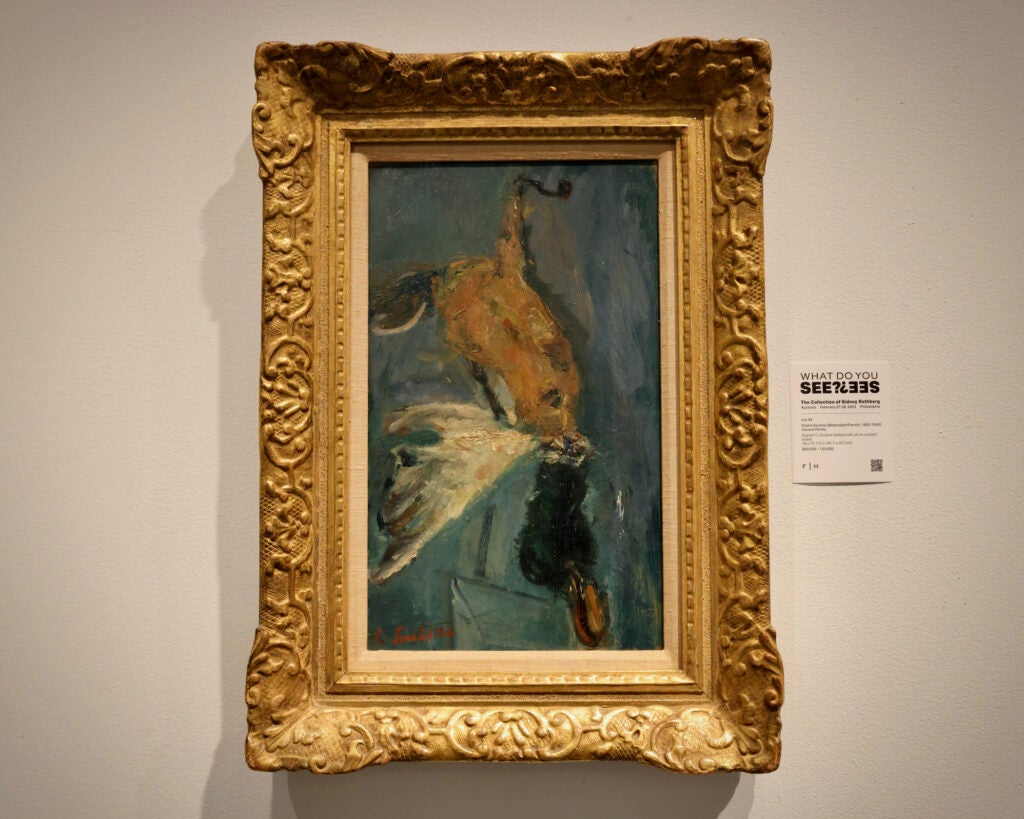
Saranne, a stage IV cancer survivor, intends to donate proceeds of the auction to the American Association of Cancer research. She deliberately included some items at a reasonably low price point to encourage first-time collectors. But even a $1,000-plus starting bid is likely out of reach for many. She hopes Philadelphians will at least see the collection before it is broken up.
The exhibition is free and open this weekend from 12 – 4 p.m. and Monday from 10 a.m. – 4 p.m. The first auction session starts Tuesday, February 27, at 10 a.m., with the second session on the following day.

Show your support for local public media
WHYY is your source for fact-based, in-depth journalism and information. As a nonprofit organization, we rely on financial support from readers like you. Please give today.



